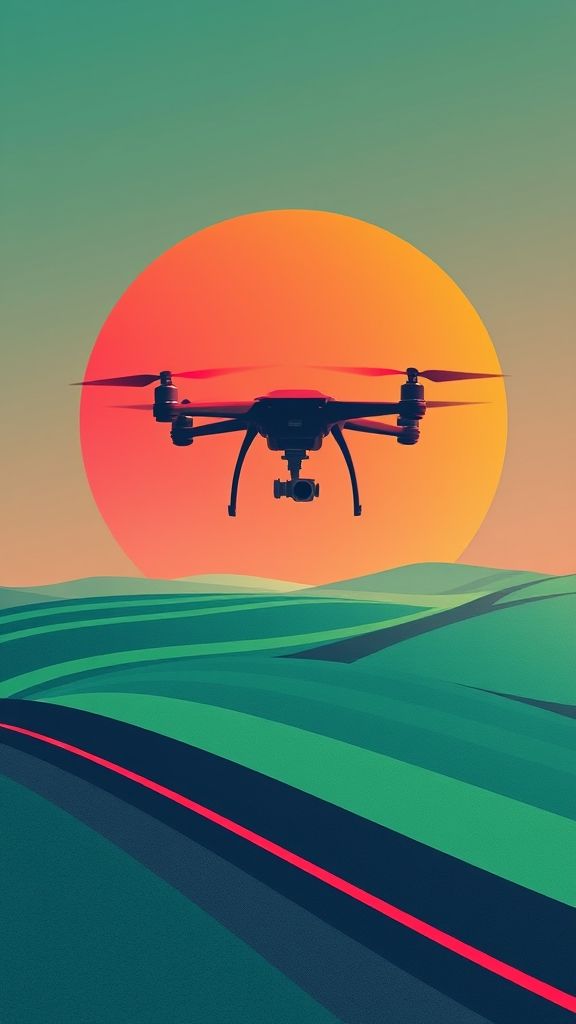Powerlight Revolutionizes Drone Tech With Ground-To-Air Power Communication Breakthrough
PowerLight and Kraus Hamdani Aerospace Validate Ground-to-Air Power Communication The partnership …
22. October 2025

The EAVision J150 Spray Drone Revolutionizes Agricultural Aviation with Automotive-Grade Terrain Following Technology
In a groundbreaking demonstration, Agri Spray Drones showcased the capabilities of its EAVision J150 spray drone on steep grassback terraced fields that have long been a challenge for agricultural drones. The J150’s advanced terrain-following technology, borrowed from the automotive self-driving car industry, has made previously impossible spraying jobs possible and operationally efficient.
The drone’s advanced terrain-following system combines three active radar arrays with automotive-grade LiDAR technology, providing 360-degree environmental awareness. This sensor fusion system processes terrain data in real-time through AI path planning algorithms, allowing the drone to treat the steep terraces as part of the landscape topology rather than flight-stopping barriers.
During the demonstration, the drone successfully navigated a challenging field featuring grassback terraces, maintaining consistent altitude and spray coverage while traveling at 45 feet per second (30.5 mph) with 32-foot route spacing. The drone sprayed approximately 19.5 gallons from its 20-gallon tank capacity while maintaining speed and altitude consistency that would be challenging for earlier agricultural spray drone systems.
The J150’s terrain-following system is made possible by the automotive-grade LiDAR technology, which was also used in self-driving cars. According to Taylor Moreland, founder and CEO of Agri Spray Drones, the front-mounted LiDAR comes from the same company that manufactures sensors for self-driving cars.
“This is an automotive grade LiDAR made for autonomy and made for self-driving and made for AI path planning,” he explained. “So, the same technology is going into self-driving cars that go 70 mph down the freeway looking for obstacles and cars and pedestrians around them is the same technology inside of the J150.”
The sensor fusion system allows the drone to process terrain data in real-time through AI path planning algorithms, enabling the drone to ascend only when necessary and maintain a minimum altitude of 15 feet (4.6 meters) without descending into valleys during approach and departure.
Agri Spray Drones accumulated over 11,000 acres of operational data on at least one J150 unit before launching the product to customers. The company put the J150 through extensive field testing in various conditions and scenarios to ensure its reliability and efficiency. The demonstrated flight consumed approximately 60% of battery capacity while spraying a full tank across the challenging terrain, leaving 40% remaining – suggesting strong operational efficiency for steep-field applications.
Technical specifications of the J150 include a 20-gallon (75.7-liter) spray tank capacity or can be configured with a 180-pound (81.6-kilogram) spreader system. The drone has a maximum takeoff weight of 328 pounds (149 kilograms), including a 45-pound (20.4-kilogram) battery, and generates 165 pounds (75 kilograms) of thrust per motor.
The J150 competes against DJI’s Agras T40, which uses active phased array radar combined with binocular vision for terrain following with up to 50-meter detection range. However, the J150’s LiDAR-first approach represents a different sensor fusion strategy borrowed from automotive autonomy rather than traditional drone obstacle avoidance systems.
The demonstration of the EAVision J150 spray drone showcases the potential of autonomous technology in agricultural aviation and highlights the importance of real-world validation before commercial launch. The company’s emphasis on accumulating extensive field testing data before introducing the product to customers is a step towards reducing the early-adopter pain that has characterized previous ag drone generations.
The automotive-grade LiDAR strategy also signals where agricultural drone technology is heading, with self-driving car companies investing billions in sensor fusion systems that must work flawlessly at highway speeds in complex environments. Adapting these proven systems for agricultural drones at lower speeds but in equally challenging terrain conditions makes technical and economic sense – particularly as LiDAR costs continue to decline due to automotive industry volume production.
For operators working in hilly terrain, orchards, or vineyards with significant topography, the J150’s demonstrated capability opens up revenue opportunities that were previously impractical or impossible with earlier spray drone technology. The question now is whether EAVision’s manufacturing and support infrastructure can scale to meet demand in the U.S. market as agricultural drone adoption accelerates beyond early adopters into mainstream farming operations.
The EAVision J150 spray drone represents a significant breakthrough in agricultural aviation, with its advanced terrain-following technology making previously impossible spraying jobs possible and operationally efficient. The company’s emphasis on real-world validation before commercial launch is a step towards reducing the early-adopter pain that has characterized previous ag drone generations, positioning the J150 as a leader in the agricultural drone market.